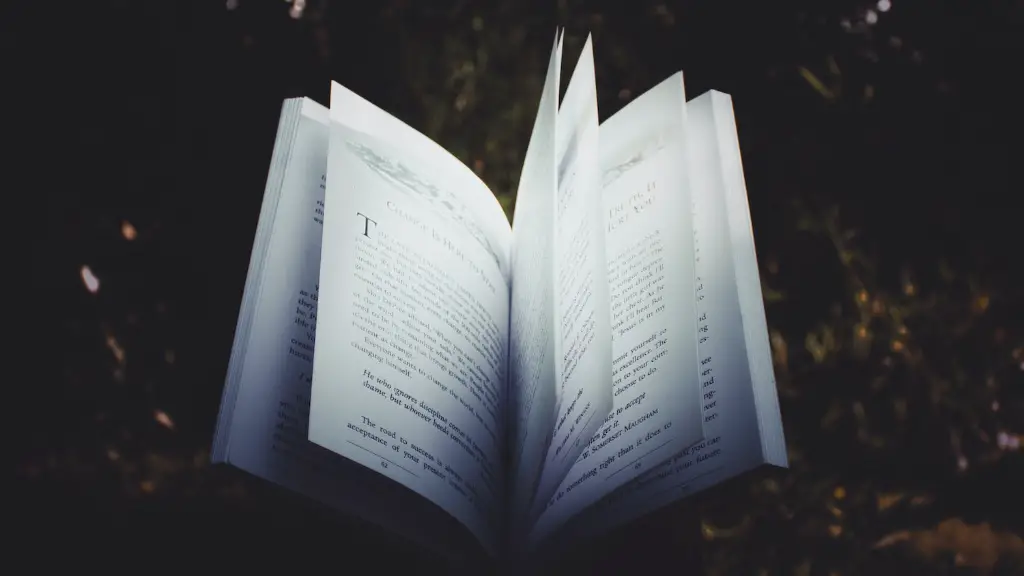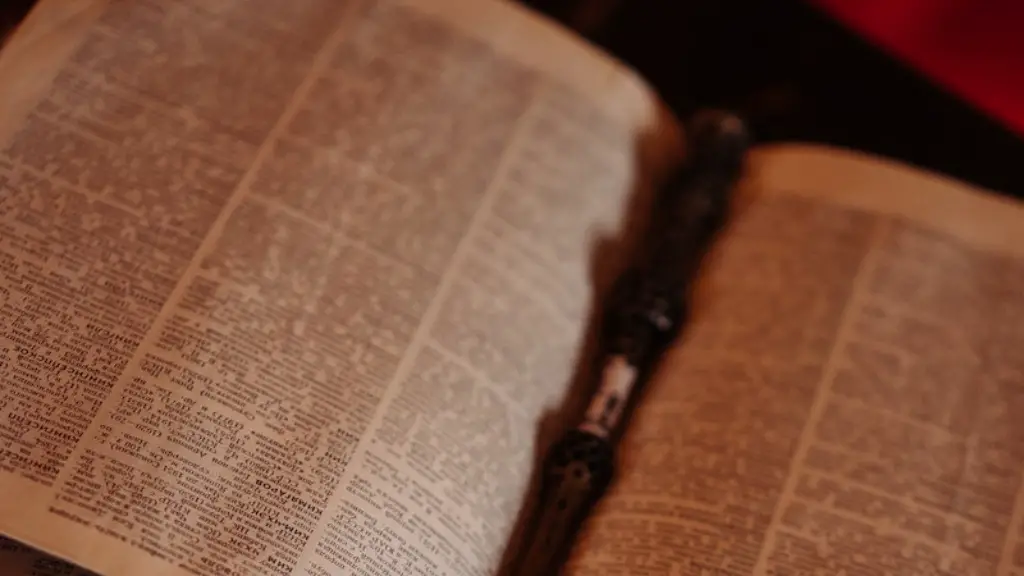The first step in formatting is to make sure that the poem is composed according to the correct form and structure. This date often varies depending on the type of poem and the publisher, so be sure to research different kinds of poems and formatting rules before getting started. For example, a sonnet follows the iambic pentameter with a rhyme scheme ABBA CDDC EEFF.
After the poem has been formatted to the desired structure, the composition of the manuscript comes into play. The poem should be centered on the page, either in the middle of the page or aligned to one side. This creates an aesthetically pleasing view for the reader. Additionally, the font should be standard, like Times New Roman or Arial, and the font size should be between 12 and 14 points.
When it comes to spacing, most presses and magazines require double-spaced manuscripts, as it is easier to read and provide constructive feedback. A single tab should be used between each line of the poem instead of using the space bar.
After positioning the poem correctly on the page and making sure the font type and size is correct, it is important that the author include their contact information, such as their full name, address, and email address. This should be included at the top of the page, centered in the middle of the page, so that it can be easily seen by the reader.
Most publishers and magazines also prefer the poem to be submitted in a word document format, like Microsoft Word. This format is the most recognized and accepted format as it allows for easier editing, as well as formatting consistency.
When submitting a poem, a short introduction of the poem can be added, like a brief summary of the poem or a creative tagline. Be sure to keep this under one sentence and make it eye-catching or intriguing.
Once the formatting has been completed, the poem is ready to be submitted to the desired publisher or magazine. As long as the poem follows the correct structure and guidelines, and is formatted properly, the chances of it being accepted are much higher.
When submitting a poetry manuscript, it is important to include both headers and footers. Headers should be included at the top of each page, slightly indented, and include the author’s name, along with the name of the poem. This should be in small font, typically size 10. Footers should be included at the bottom of each page and include the page number, along with the author’s name. This can be in the same font size as the poem itself.
Both headers and footers are important for a professional look and can help keep track of a poem in the event that it is part of a larger, multi-page submission. If a poem is part of a larger submission, it is also important to include a title page and a table of contents, so that the reader has a clear indication of the structure and order of the content.
Proofreading and Editing
Once the formatting of the poem is complete, the author should take a few moments to review the poem and make sure that it meets the desired form and structure. This is where proofreading and editing come into play, as any typos or grammar mistakes can negatively affect the reading of the poem.
When proofreading and editing, the author can use tools like spellcheck and Grammarly to help with minor errors. However, reading the poem aloud to yourself, or even to another person, can be extremely useful in identifying any errors in the poem. This process should not take more than 15-20 minutes, and can make a huge difference in the overall quality of the poem.
Sources
Once the author has proofread and edited their poem, it is essential to include a list of sources used in the poem. This includes any books, movies, songs, or literary works that may have inspired or influenced the poem. This ensures that the author gives credit where credit is due and does not infringe on any copyright laws.
Additionally, listing sources also helps with credibility and professionalism, as it shows that the author has done their research and is honest about where any ideas or content may have come from.
Copyright
When submitting a poem, it is important to remember that the content still belongs to the author. Even if the poem is accepted and published by a magazine or press, the original copyright of the poem remains in the author’s name.
This is why it is important that the poem is marked with a copyright at the end of the document. A simple “Copyright (year) (author’s name)” can help protect the poem and ensure that the author’s credit is given where due.
Conclusion of Submission
Once all of the necessary steps have been taken and the poem is formatted properly, all that is left to do is submit it to the desired magazine or press. Be sure to double check the poem, re-read it one last time to make sure that you’re happy with the final product.
Additionally, it is also important to find contests or magazines that specialize in the type of poem that has been written. This will increase the chances of the poem being accepted, as there is a greater chance of the poem being appreciated and well received.
Benefits of Proper Formatting
When it comes to submitting an unpublished poem, proper formatting is essential. Proper formatting can help create a professional and eye-catching view that will make it easier for the reader to understand and appreciate the poem.
Additionally, proper formatting is also beneficial for the author, as it helps to make sure that the poem meets all of the necessary rules and regulations, thus increasing the chances of it being accepted.
Alternatives to Formatting
For those who are not comfortable formatting their poem, there are options to having it done professionally. There are a number of services that specialize in formatting manuscripts, with reasonable pricing and a guarantee of quality work.
Alternatively, there are also a number of other services that provide formatting aid, such as library workshops, tutoring services and online resources.
Self-Publishing
In addition to submitting to publishers or magazines, authors can also self-publish their poems. Self-publishing gives authors the control to format and design their own poems, as well as have complete freedom over the entire process.
Self-publishing also removes the difficulties of finding a publishing house, as well as the time and effort required in formatting a manuscript for submission.
Marketing
After the poem has been formatted and published, the final step requires marketing and promotion. This includes creating a website, a presence on social media, and submitting the poem to poetry websites for maximum exposure.
Additionally, another way to promote a poem is to give out free copies at poetry readings, enter poetry contests, and even host a book launch or reading.
All in all, formatting a poetry manuscript is a tedious process, however when done properly, it can help make the poem stand out among the rest and increase the chances of success. By following this comprehensive guide, authors can be sure that their poem is professional, polished and ready for submission.


